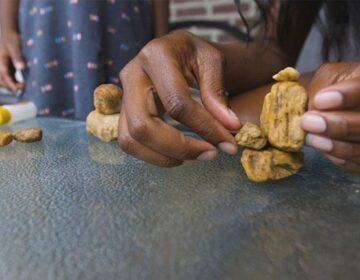From garden to classroom, Southern Delaware’s SNAC Garden Foundation aims to enhance student learning and well-being
The foundation helps transform school gardens into outdoor classrooms to promote nature appreciation and healthier eating habits.
Listen 1:19
SNAC educator Maxine Middlebrook teaching the students on the North Georgetown Elementary school garden. (Courtesy of SNAC Garden Foundation)
From Philly and the Pa. suburbs to South Jersey and Delaware, what would you like WHYY News to cover? Let us know!
A group in southern Delaware is working to transform schoolyards into vibrant outdoor classrooms and thriving ecosystems.The work of School Nutrition AgriCulture Garden Foundation, better known as SNAC, in southern Delaware helps students receive equitable access to high-quality environmental STEM education and health lessons.
Growing fruits and vegetables is a dynamic way for students to learn science from kindergarten to fifth grade, said SNAC executive director Shandra Furtado.
“The curriculum is based on their core science standards and then it’s kind of through the lens of environmental science, health education, and a STEM curriculum,” she said. “They’re learning how the ecosystem works, how plants grow, a lot of different cultural aspects of growing food, and just relationships with the land in this schoolyard.”
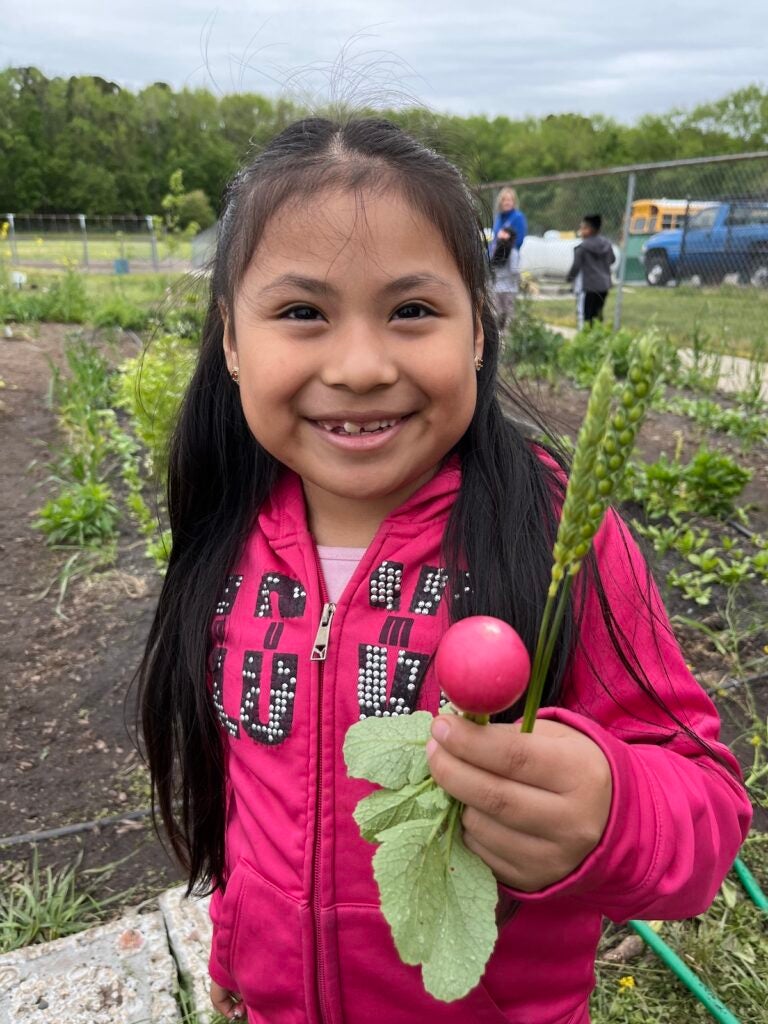
Founded in 2011, this Sussex County-based organization initially started its journey with the Southern Delaware School of the Arts. In 2020, under the leadership of Furtado, the organization extended its reach to two more schools within the Indian River School District, driven by its positive outcomes.
Today, SNAC gardening remains accessible to students at SDSA, North Georgetown Elementary School, Howard T. Ennis school, and Long Neck Elementary.
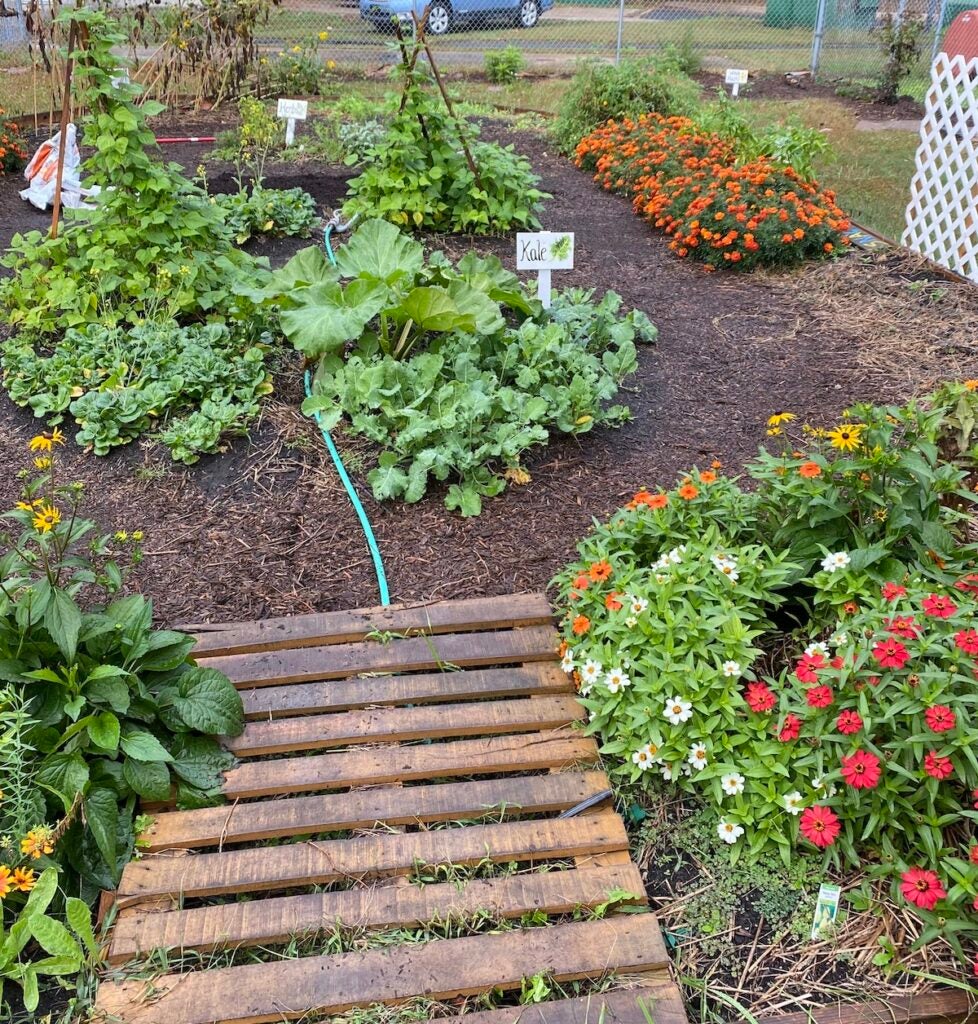
The group launched a study in 2020 to better understand the impact the program would have for North Georgetown students. “We surveyed those students based on their vegetable perceptions, and we asked them specific questions about certain vegetables, their intake, and whether or not they have seen that vegetable before.”
They found that in general, kids didn’t have a good sense of how the food they eat relates to the nature around them. Furtado said that showed there is a need for nutrition intervention.
“They would ask me, ‘oh what plant does a chicken nugget grow from’ or something like that,’” she said. “There were a lot of students who didn’t know that food came from the ground, they thought it came magically from the grocery store.”
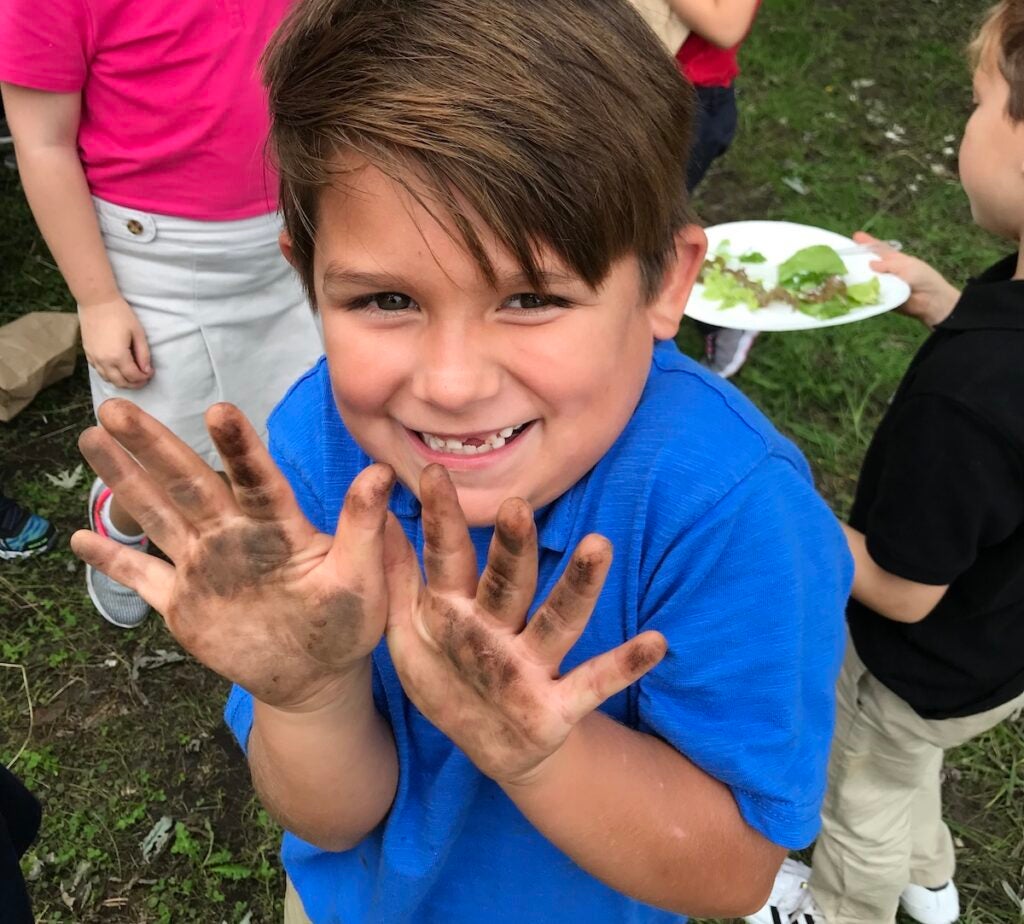
SNAC surveyed the same students 18 months later and noticed that their perception of vegetables had improved.
“We surveyed them again and we saw that within those three semesters that same cohort of fifth graders jumped their perception by 11% of liking vegetables more,” she said. “When we went to look at the specific vegetables, we saw something pretty cool. Those vegetables in specific jumped by like 30%.”
While the program was originally intended to help students connect with nature, encourage healthy eating habits, and teach the importance of agriculture, it’s also boosting students’ academic performance.
“It was the math interventionist that told me students were having easier times understanding word problems when they were garden-themed because they could make the connection back to the garden and what we’ve done in the garden,” she said. “Another teacher had told me she saw students who don’t really excel in the classroom, that are not always a straight A student, [and] not always the best student in the classroom, but SNAC garden has been able to shine a light to those students.”
Every week, students participate in a 30- to 45-minute garden session led by SNAC teachers like Furtado. She has observed that this hands-on approach is effective even though it can sometimes become “chaotic.” SNAC Garden educators appreciate the right kind of chaotic excitement because it reflects the students’ enthusiasm for learning about vegetation.
“It’s a semi-controlled chaos a lot of the time… we spend about 20 to 30 minutes in their independent kind of exploration,” she said laughing. “A lot of times too, we get distracted because as I said, we do pollinator habitats inside of the schoolyard. And so we see frogs, we see butterflies. Today, we found five caterpillars.”
At the close of each harvest season, students come together for a harvest party, savoring the fruits and vegetables they have grown themselves.
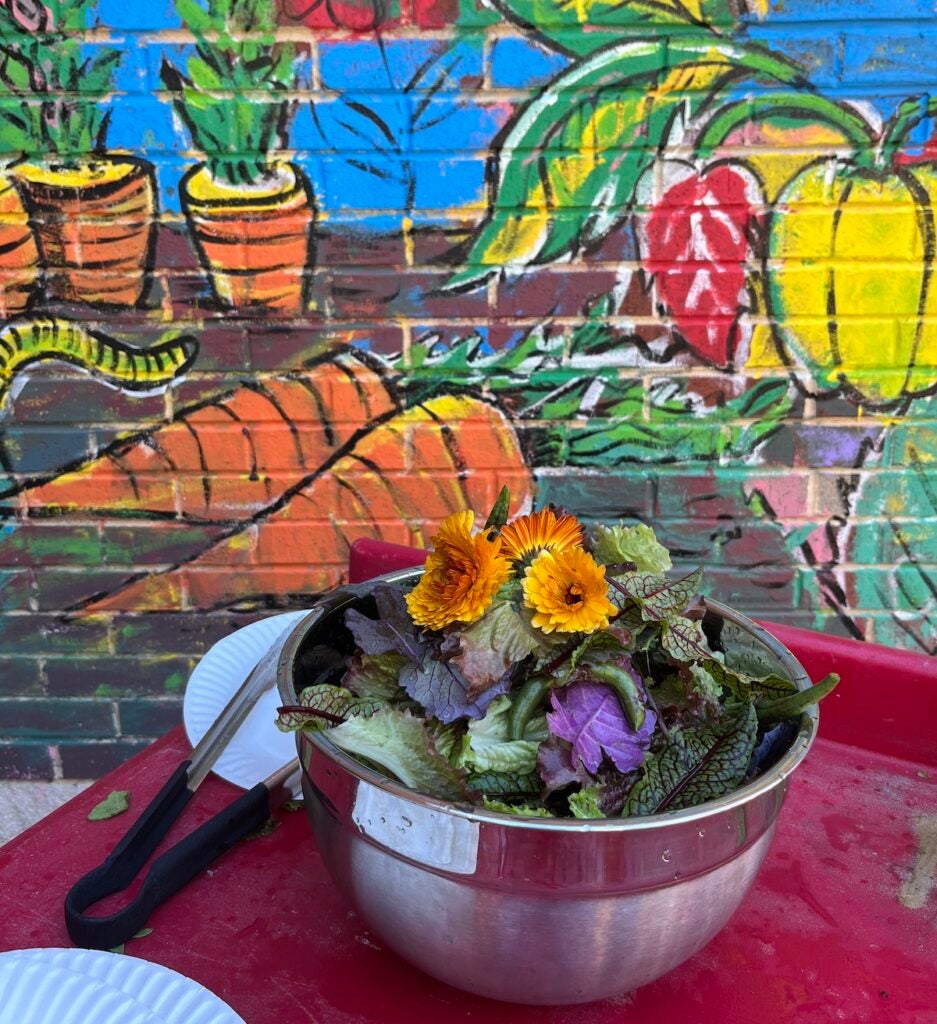
“Every year they get to plant seeds with us, kind of within the curriculum, and then take care of the garden,” she said. “Each grade gets to do a harvest party where they harvest all the lettuce in the garden and we make a big salad for the classroom.”
With funding secured from the U.S. Dept. of Agriculture, SNAC is set to expand its program to a new school next fall. They also have plans to develop a program tailored for parents.

Get daily updates from WHYY News!
WHYY is your source for fact-based, in-depth journalism and information. As a nonprofit organization, we rely on financial support from readers like you. Please give today.




